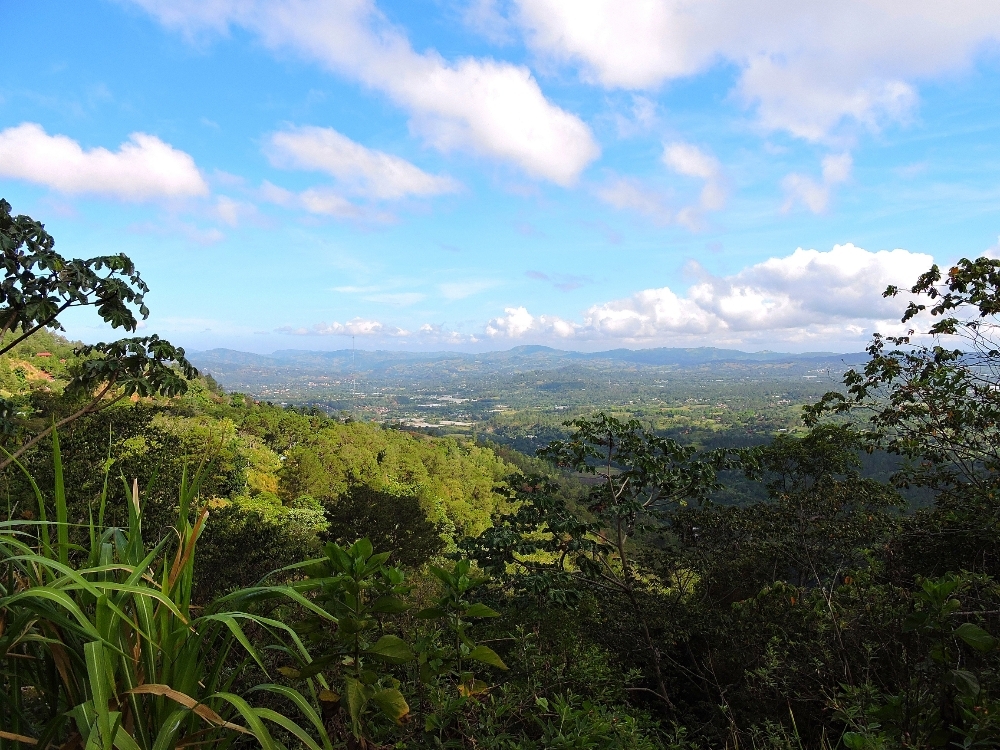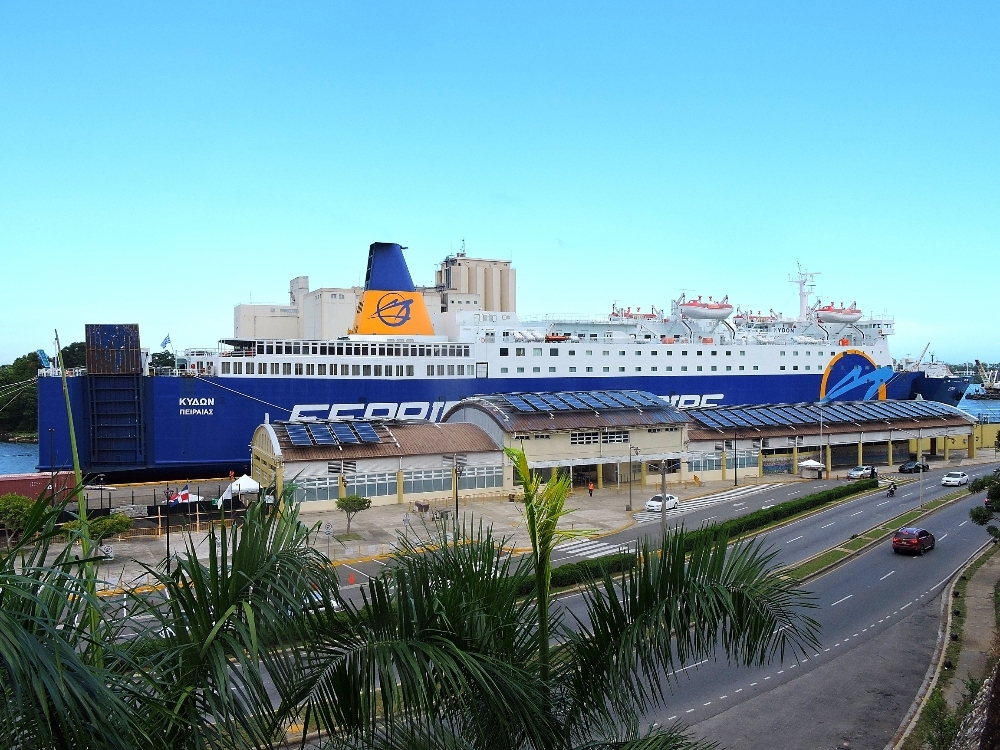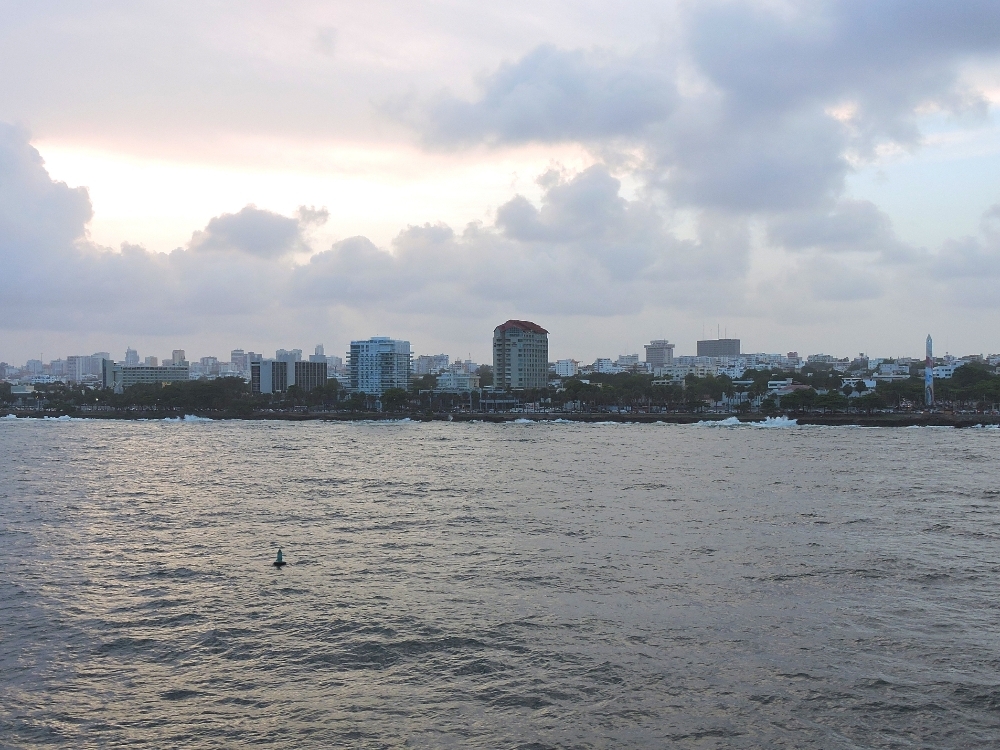Because I was forced to use air travel to leave the Bahamas, I had a few choices as to which island would be next on the Tour route. Long ago, I decided that the island would be Hispaniola, and the country would be the Dominican Republic. A few factors were important in making that choice, including the shortest flying distance of the available options (though there were no direct flights, requiring a short layover in Turks and Caicos,) a location that would allow me to tally another WHS and potentially some nice birds, and, importantly, the ability to make the next transfer by sea. I also felt that the country should be a relatively pleasant touring destination, since it contains a variety of terrains, has a reputation for controlling deforestation (at least relative to its equi-insular neighbor, Haiti,) and possesses an interesting history.
I noticed a few positive aspects to touring the country before I had even begun the major cycling portion of the route. One was even evident from the airplane on route from the Bahamas, where I could see a distinct change in the climatic properties along the way. At some point between the islands, the placid seas of the Horse Latitudes fairly suddenly gave way to the more active waters that were being energized by the Trade Winds. That meant that while it was still quite hot on Hispaniola, the breeze that was usually present made the daytime hours feel more tolerable. I also quickly noticed the different style of roadway travel, where a more multi-use mode of traffic was common, as it often is in countries that are labeled as less developed.
This normally is preferable to me, as opposed to the highly engineered traffic systems of more modern
areas, which are usually designed to maximize the speed of automobiles. I was also a little surprised that the physical conditions of the roads were relatively good, at least most of the time. The most important of the beneficial qualities I noticed was that the costs of food, accommodations, and other items had finally dropped to a more reasonable level, compared to what I had experienced over the previous few months, and that was a pleasant change of pace.
Of course, there are always negative factors to any place as well, and in this case they did pull down my level of enjoyment of the country somewhat. Most of those were related to the fairly high population density found in the country at this time. This resulted in a few effects that were most evident during cycling. For one, while the roads were good there is a preponderance to place numerous speed bumps wherever a road passes any cluster of dwellings or businesses, and, since those places are very numerous, the slowing effect on cycling travel is notable. The lack of unpopulated places also essentially eliminated the possibility of camping along my route, a practice that I had hoped to return to in order to keep expenses reasonable. Fortunately, as I mentioned above, the lower costs, in general, somewhat compensated for that, and the seven nights I spent indoors cost only a little more than one particular night I recently spent indoors in Iceland. And, while I prefer cycling on multi-use roadways, in such cases there are usually a large fraction of vehicles with terrible emissions levels, and so a higher density of populated places means more highly polluting vehicles, and a more aggravating air quality overall. In general, the Dominican Republic reminded me of cycling in India, except that there were many fewer busses and trucks on the roads, and also no cows wandering the streets.
I arrived at Puerto Plata, on the north coast in the island, and gave myself five and a half days to reach the capital, Santo Domingo, where I would catch a ferry to Puerto Rico. My original idea was to do three reasonably long days of cycling and take two full days off for birding. However, based on the factors mentioned above, it turned out to be better to spread out the cycling over all the available days. That would be especially beneficial during the first portion of the route, which contained a couple of significant climbs in hot conditions. With the overall crowding along the route, and fairly short distances involved, I took relatively few photographs along the way. This one shows a pleasing landscape, though the number of buildings visible in the distance also reveals the somewhat crowded nature of even rural areas throughout the country.

With that slight route adjustment, it was not too difficult to reach the capital on schedule, though a few times the breeze backed off and I was rather glad that I had slowed the pace a little. Santo Domingo is probably just as one might imagine it to be, sprawling, congested, and polluted, especially around the edges. I have enough experience with riding into such places by now that it did not provide much of a surprise for me and I arrived with enough time to visit the more pleasant historic part of the city before leaving for San Juan by ferry the following evening.

